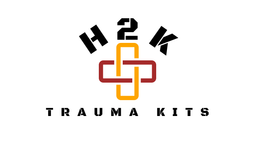Sucking Chest Wound: A Life-Threatening Injury
In the realm of emergency medical situations, few injuries evoke the urgency and gravity associated with a sucking chest wound. Also known as an open pneumothorax, this injury demands immediate attention and a swift response due to its potentially life-threatening consequences. In this blog, we will delve into the anatomy of a sucking chest wound, its causes, symptoms, and crucial first aid measures that can make the difference between life and death.
Anatomy of a Sucking Chest Wound:
To comprehend the severity of a sucking chest wound, it’s essential to understand the anatomy of the thoracic cavity. The chest is protected by the ribcage, and the space between the lungs and chest wall is known as the pleural cavity. This cavity is normally sealed, maintaining a negative pressure that allows the lungs to expand and contract during breathing.
A sucking chest wound disrupts this sealed environment. It typically occurs when an object, such as a bullet or knife, punctures the chest wall, creating an opening. This opening allows air to rush into the pleural cavity during inhalation, preventing the lung from fully expanding and leading to a cascade of life-threatening complications.
Causes of Sucking Chest Wounds:
Sucking chest wounds can result from various traumatic incidents, including gunshot wounds, stabbings, or severe blunt force trauma to the chest. These injuries compromise the integrity of the chest wall, enabling air to enter the pleural space.
In addition to intentional injuries, accidents such as automobile crashes or falls from heights can also lead to sucking chest wounds. The forceful impact on the chest can cause fractures to the ribs, creating an avenue for air to enter the pleural cavity, this is called closed pneumothorax.
Recognizing Symptoms:
Identifying the symptoms of a sucking chest wound is crucial for prompt intervention. Patients with this injury may exhibit signs of respiratory distress, including rapid and shallow breathing. A noticeable “sucking” sound, often described as a hissing or bubbling noise, can be heard with each breath, confirming the presence of an open pneumothorax.
Other symptoms may include chest pain, cyanosis (bluish discoloration of the skin), and anxiety. It’s imperative to note that these signs can escalate rapidly, emphasizing the need for immediate action.
Immediate First Aid Measures:
Given the life-threatening nature of a sucking chest wound, swift and effective first aid is paramount. The primary goal is to seal the chest wound to prevent further air from entering the pleural cavity during inhalation. Here are the steps to take:
1. Cover the Wound: Place an airtight material over the wound. This can be achieved by using a sterile dressing or airtight material such as plastic. Tape the material on three sides, leaving one side open to create a makeshift occlusive dressing.
But listen, you don’t have to be MacGyver if you pick up the H2K IFAK.
Our kits come with 2 vented chest seals so you aren’t looking for a Walmart sack and duct tape during emergency like this.
And we put 2 in each kit for situations like a gunshot wound where you could possibly have an entry and exit wound.
CLICK BUY NOW AND PICK UP OUR ESSENTIAL TRAUMA KIT!
2. Secure the Dressing: Ensure that the dressing is securely taped on three sides, allowing a ‘flutter valve’ effect. This means the dressing will permit air to exit the pleural cavity during exhalation but prevent it from entering during inhalation.
3. Monitor Vital Signs: Keep a close eye on the injured person’s vital signs, including breathing rate and heart rate. Seek emergency medical assistance promptly.

